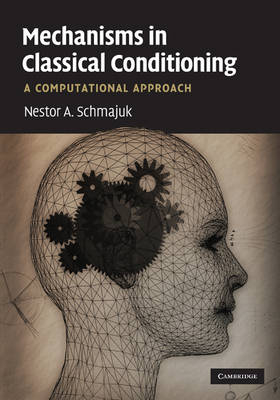
Mechanisms in Classical Conditioning
Cambridge University Press (Verlag)
978-0-521-88780-9 (ISBN)
What mechanisms are involved in enabling us to generate predictions of what will happen in the near future? Although we use associative mechanisms as the basis to predict future events, such as using cues from our surrounding environment, timing, attentional, and configural mechanisms are also needed to improve this function. Timing mechanisms allow us to determine when those events will take place. Attentional mechanisms ensure that we keep track of cues that are present when unexpected events occur and disregard cues present when everything happens according to our expectations. Configural mechanisms make it possible to combine separate cues into one signal that predicts an event different from that predicted individually by separate cues. Written for graduates and researchers in neuroscience, computer science, biomedical engineering and psychology, the author presents neural network models that incorporate these mechanisms and shows, through computer simulations, how they explain the multiple properties of associative learning.
Dr Schmajuk has been an Associate Professor of Biomedical Engineering in Buenos Aires (Argentina), an Assistant Professor of Psychology at Northwestern University, and is presently a Professor of Psychology and Neuroscience at Duke University. Here he has developed several neural network models of classical conditioning, operant conditioning, animal communication, creativity, spatial learning, cognitive mapping and prepulse inhibition. Previous books by this author include Animal Learning and Cognition: A Neural Network Approach, 1997.
Part I. Introduction: 1. Classical conditioning: data and theories; Part II. Attentional and Associative Mechanisms: 2. An attentional-associative model of conditioning; 3. Simple and compound conditioning; 4. The neurobiology of classical conditioning; 5. Latent inhibition; 6. The neurobiology of latent inhibition; 7. Creativity; 8. Blocking and overshadowing; 9. Extinction; 10. The neurobiology of extinction; Part III. Configural Mechanisms: 11. A configural model of conditioning; 12. Occasion setting; 13. The neurobiology of occasion setting; Part IV. Attentional, Associative, Configural, and Timing Mechanisms: 14. Configuration and timing: timing and occasion setting; 15. Attention and configuration: extinction cues; 16. Attention, association and configuration: causal learning and inferential reasoning; Part V. Conclusion: Mechanisms of classical conditioning.
| Zusatzinfo | 9 Tables, unspecified; 1 Halftones, unspecified; 141 Line drawings, unspecified |
|---|---|
| Verlagsort | Cambridge |
| Sprache | englisch |
| Maße | 179 x 254 mm |
| Gewicht | 1130 g |
| Themenwelt | Geisteswissenschaften ► Psychologie ► Allgemeine Psychologie |
| Geisteswissenschaften ► Psychologie ► Biopsychologie / Neurowissenschaften | |
| Geisteswissenschaften ► Psychologie ► Verhaltenstherapie | |
| Naturwissenschaften ► Biologie ► Humanbiologie | |
| Naturwissenschaften ► Biologie ► Zoologie | |
| ISBN-10 | 0-521-88780-1 / 0521887801 |
| ISBN-13 | 978-0-521-88780-9 / 9780521887809 |
| Zustand | Neuware |
| Haben Sie eine Frage zum Produkt? |
aus dem Bereich


